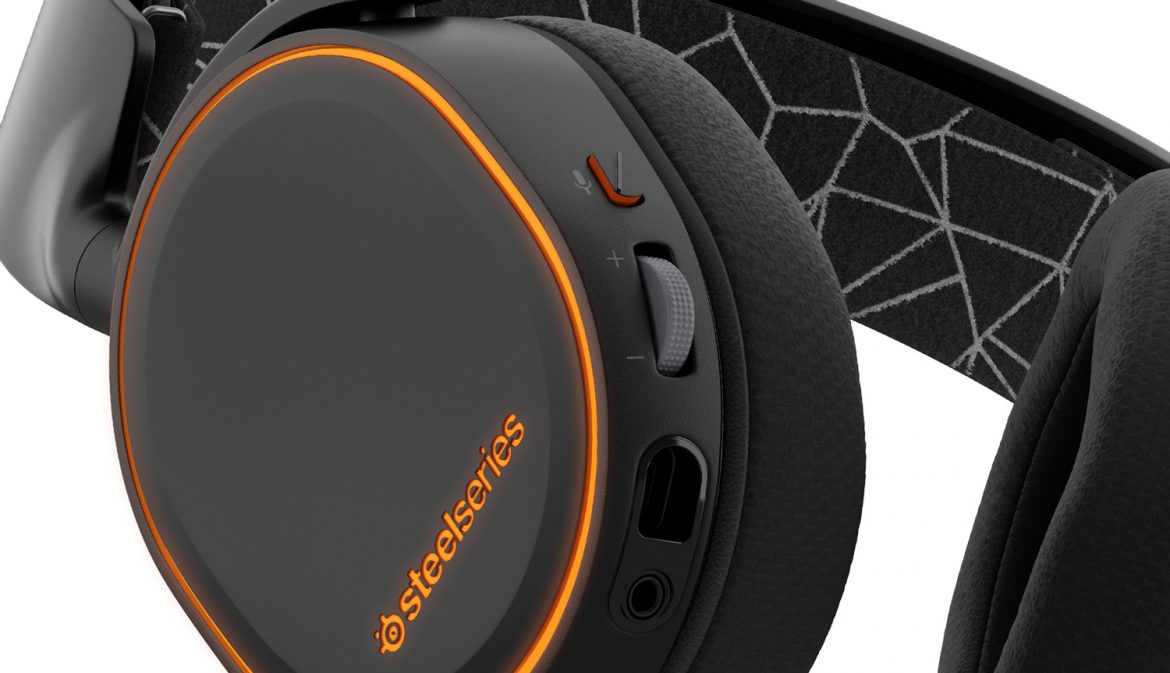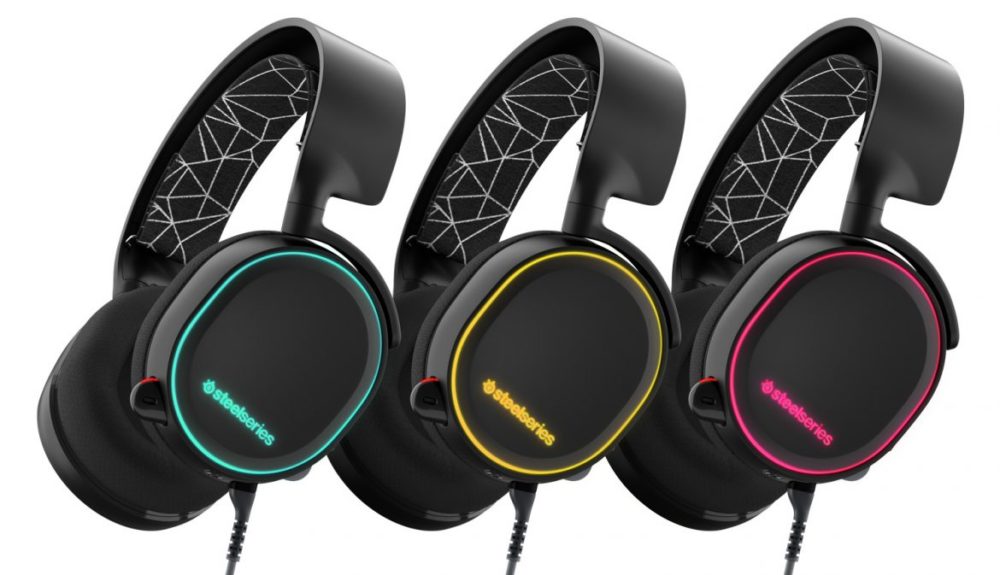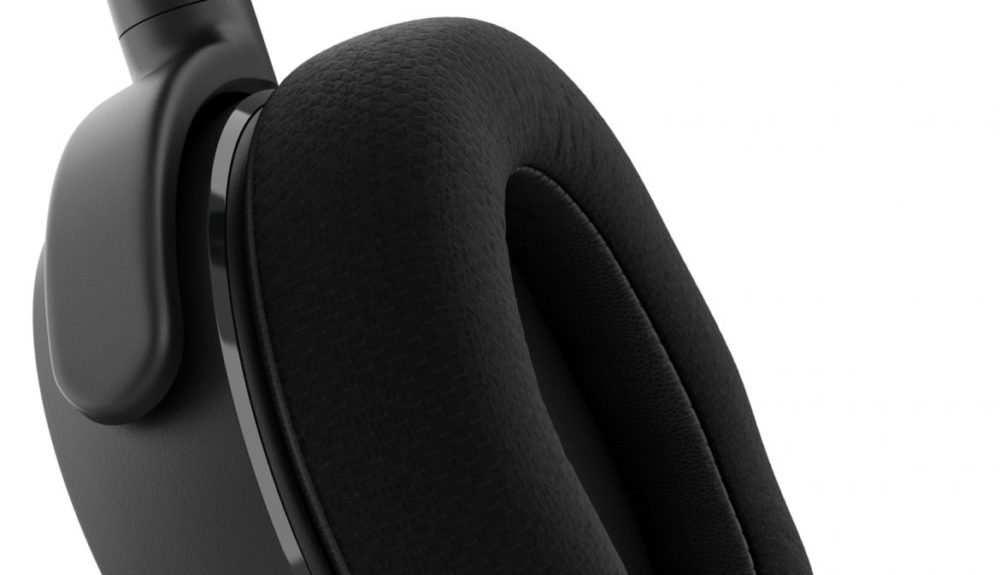TL;DR
The SteelSeries Arctis 5 gaming headset impresses with its stylish, lightweight design and exceptional comfort, inspired by Danish aesthetics and winning a Red Dot Award. It offers good sound quality for gaming and movies, with a clear microphone and convenient on-ear controls. While it lacks wireless connectivity and its music performance is only adequate, the Arctis 5 provides excellent value for its price point, especially for dedicated gamers who prioritize comfort and style. Discover if the Arctis 5 is the perfect upgrade for your gaming setup by reading the full review.
The Danes are renowned for their exceptional and well-considered design. The SteelSeries Arctis headphones have been recognized with the prestigious Red Dot Design Award and follow in the footsteps of their fellow countrymen Bang & Olufsen. The Arctis series represents a relatively new line of gaming headphones from SteelSeries, engineered to deliver performance comparable to SteelSeries’ classic high-end Siberia headphones, but at a more accessible price point and with enhanced modern features. The Arctis series is available in three distinct models, each with increasing price and features – the 3, 5, and 7, with the 7 offering wireless connectivity. In this review, we will be focusing on the SteelSeries Arctis 5, the mid-range option.
Gaming headphones are not typically celebrated for their sophisticated design. Many tend to be characterized by a plasticky, bulky, and aesthetically unappealing construction. However, these designs are often geared towards gamers who primarily use them in front of a computer or on a sofa. The Arctis 5 presents a stylish alternative within the gaming headphone category. From the moment of unboxing, its slim, lightweight, and well-designed form factor is apparent. This over-ear model provides a comfortable and suitably sealing fit without causing excessive heat or discomfort, even after extended use. The ski goggle-inspired headband, which is replaceable and secures the headphones in place, offers an airy and elastic feel. SteelSeries deserves recognition for their thoughtful design, which prioritizes comfortable long-term wear – a key consideration for gamers. The headphones incorporate a 40mm driver with a 32-ohm impedance, ensuring compatibility with a wide range of devices, including gaming consoles, mobile phones, and computers.
The package includes a USB chat mixer, compatible with computers and PS4 (but not Xbox One). The headphones connect via a standard 3.5 mm analog jack. Exercise caution with the mini-adapter to 3.5mm, as it is easily misplaced. Initially, we encountered clicking and buzzing when using the USB connection, but a firmware update through SteelSeries’ Engine 3 software resolved these issues quickly. The software enables users to configure various sound profiles with customized EQ settings for different games (PC/Mac only). It also controls the integrated LED lights on the earcups, adding a visual element, but requires a USB connection. The headphones support the DTS:X audio format in 7.1 surround sound, but this is limited to Windows and requires the software and USB connection. Other platforms (PS4, Xbox, Switch, VR, mobile, etc.) will be limited to analog connection and stereo sound.
The retractable microphone delivers clear audio during multiplayer sessions, according to our teammates. They reported no issues with hearing us, and the noise reduction appeared to function effectively. A mute button for the microphone and a built-in volume dial on the earcup provide convenient control, eliminating the need to adjust system-level volume settings on consoles like PS4 and Xbox One (simply set the main volume higher than you think from the beginning, so you have some room to play with).
Sound Quality (please read our philosophy when testing headphones)
The SteelSeries Arctis 5 produces a sound that is easy to appreciate and offers a sense of spaciousness. The open earcup design allows for greater airflow, resulting in a less immersive soundstage and a less pronounced bass response compared to fully sealed headphones. We experienced comfortable and expected audio performance while playing Mario Kart 8 on the Switch. The headphones also perform admirably for movie playback, delivering clear and distinct treble to enhance dialogue and sufficient bass to support action sequences in well-produced films such as Transformers.
However, when listening to music, our assessment is less enthusiastic. Well-mixed, high-quality tracks, such as JungeJunge’s Run Run Run, sound excellent. However, more acoustic and singer-songwriter-oriented pop exhibits a slightly weak and muffled quality. The warmth and body of the sound image in Disturbeds Stricken and Sound of Silence is somewhat lacking. It becomes apparent through various genres and songs that the SteelSeries Arctis 5 are primarily designed as gaming headphones and not specifically optimized for audiophile-grade music listening. Given the price range, this is understandable, as direct comparisons to higher-end brands are not realistic. However, other gaming headphones offer superior music performance, such as the Plantronics BackBeat PRO, although they are significantly more expensive.
Conclusion
The SteelSeries Arctis 5 is a solid headphone choice for users primarily interested in gaming and occasional movie watching. The sound quality is commendable for the price, and few gaming headsets can match its stylish design and exceptional comfort during extended gaming sessions. As wireless connectivity becomes increasingly prevalent in gaming, the lack of a wireless option is notable. However, the Arctis 7 offers this feature for an additional cost while maintaining similar sound characteristics (though lacking aptX, which enhances music quality). We plan to review the Arctis 7 in the future to determine if the price difference is justified.
For music listening, the Arctis 5 is adequate but not exceptional. The focus on gaming is apparent, and the resources allocated to music performance are limited. Nevertheless, at this price point, it’s difficult to find significant fault. The SteelSeries Arctis 5 offers a lightweight, comfortable design, good sound quality for gaming, and represents excellent value for the price.





